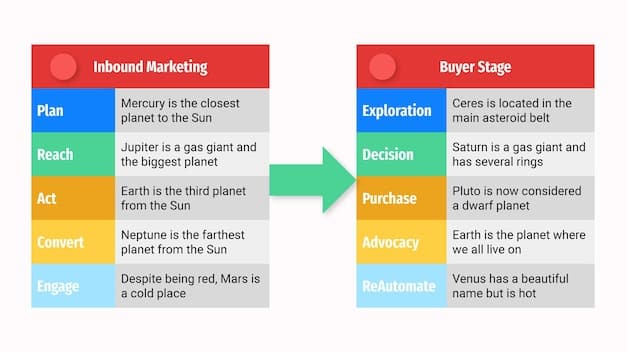HSA vs. FSA: Choosing the Right Health Savings Account for 2025

A health savings account (HSA) and a flexible spending account (FSA) are both tax-advantaged accounts that can be used to pay for healthcare expenses, but understanding their differences—eligibility, contributions, and usage—is crucial for selecting the best option to complement your health plan in 2025.
Navigating the world of health savings accounts can be daunting. When comparing an HSA vs. FSA: Which Savings Account Should You Choose with Your Health Plan in 2025?, understanding their distinct features is essential for making informed decisions about your healthcare spending and savings.
Understanding Health Savings Accounts (HSAs)
A Health Savings Account (HSA) is a tax-advantaged savings account that can be used to pay for qualified healthcare expenses. It’s a powerful tool for individuals and families looking to manage their healthcare costs effectively, offering a unique combination of savings and investment opportunities.
Unlike some other healthcare spending accounts, an HSA is linked to a specific type of health insurance plan known as a High-Deductible Health Plan (HDHP). Understanding this connection is crucial to determining your eligibility and maximizing the benefits of an HSA.
Key Features of an HSA
HSAs come with several distinct advantages that make them an attractive option for many. These features not only help in managing current healthcare expenses but also offer long-term financial benefits.
- Tax Advantages: Contributions to an HSA are tax-deductible, the funds grow tax-free, and withdrawals for qualified medical expenses are also tax-free. This triple tax benefit is a significant advantage.
- Portability: The HSA is owned by the individual, not the employer. This means you can take your HSA with you if you change jobs or health plans.
- Investment Opportunities: HSAs often allow you to invest your savings in mutual funds, stocks, and other investments, potentially growing your healthcare savings over time.
HSAs provide flexibility and control over your healthcare spending, making them a valuable asset in your financial planning. The ability to save, invest, and use the funds tax-free for qualified medical expenses offers a level of financial security that can be particularly beneficial for long-term healthcare needs.

Delving into Flexible Spending Accounts (FSAs)
A Flexible Spending Account (FSA) is another type of tax-advantaged account that allows you to set aside pre-tax money to pay for qualified healthcare expenses. Unlike HSAs, FSAs are typically offered through your employer as part of a benefits package. They provide a convenient way to manage and reduce your out-of-pocket healthcare costs.
FSAs come in different forms, including healthcare FSAs, dependent care FSAs, and limited-purpose FSAs. Each type is designed to cover specific types of expenses, so it’s important to understand which one best suits your needs.
Understanding FSA Variations
FSAs aren’t one-size-fits-all. Understanding the different types of FSAs can help you choose the right option based on your individual needs.
- Healthcare FSA: Reimburses you for a wide range of medical, dental, and vision expenses not covered by your health insurance plan.
- Dependent Care FSA: Helps you pay for childcare expenses, such as daycare, after-school programs, and summer camps, so you can work or attend school.
- Limited-Purpose FSA: Designed to be used in conjunction with an HSA. It can only be used for dental and vision expenses, allowing you to maximize your HSA contributions.
FSAs are a valuable benefit that can help you save money on healthcare and dependent care expenses. However, they also come with certain rules and restrictions, such as contribution limits and the ‘use-it-or-lose-it’ rule, which must be carefully considered.
Choosing between an HSA and an FSA depends on your individual circumstances, health insurance coverage, and long-term financial goals. While both offer tax advantages, they differ in eligibility, contribution rules, and how the funds can be used.
Key Differences: HSA vs. FSA
While both HSAs and FSAs offer tax advantages for healthcare spending, they have distinct differences that make them suitable for different individuals and families. Understanding these differences is crucial in making the right choice for your needs.
The key differences lie in eligibility requirements, how contributions are handled, and the long-term management of the account and its funds.
Eligibility and Enrollment
Eligibility is the first major point of divergence for these two account types. Understanding the specific criteria will immediately narrow down your options.
- HSA: Requires enrollment in a High-Deductible Health Plan (HDHP). You cannot be covered by any other non-HDHP health plan, including Medicare.
- FSA: Typically offered as part of an employer’s benefits package and does not require a specific type of health plan.
Contribution Rules
Contribution rules dictate how much money you can set aside each year and can significantly impact your health savings strategy.
- HSA: Contributions can be made by the individual, the employer, or both. Contribution limits are set annually by the IRS and are generally higher than FSA limits.
- FSA: Contributions are typically made through pre-tax payroll deductions. Contribution limits are also set annually by the IRS, and there’s usually a “use-it-or-lose-it” rule, meaning you must use the funds within the plan year or forfeit them.

Making the Right Choice for 2025
Choosing between an HSA and an FSA requires careful consideration of your individual circumstances, health insurance coverage, and financial goals. There’s no one-size-fits-all answer, so it’s essential to weigh the pros and cons of each option.
Consider the portability, investment opportunities, and long-term savings potential of an HSA, as well as the accessibility and ease of use of an FSA.
Factors to Consider
Several factors can influence your decision, ranging from your health plan to your financial planning horizons.
- Health Plan Coverage: If you have a High-Deductible Health Plan (HDHP), an HSA may be your best option. If you have a traditional health plan, an FSA may be more suitable.
- Healthcare Needs: Consider your anticipated healthcare expenses for the year. If you have significant ongoing medical needs, an FSA might be more useful for immediate cost coverage.
- Financial Goals: If you’re looking for a long-term savings and investment vehicle for healthcare expenses, an HSA may be a better choice due to its portability and investment options.
By carefully evaluating these factors, you can make an informed decision that aligns with your healthcare and financial needs. You may also consult with a financial advisor or benefits administrator to get personalized guidance.
Maximizing Your Health Savings
Regardless of whether you choose an HSA or an FSA, it’s important to utilize the account effectively to maximize your health savings. This includes understanding the eligible expenses, planning your contributions, and keeping track of your spending.
Maximizing your health savings can lead to significant tax benefits and financial security, helping you manage healthcare costs more effectively.
Tips for Effective Use
These tips can help you make the most out of your health savings account, regardless of whether it’s an HSA or FSA.
- Plan Contributions: Determine your anticipated healthcare expenses for the year and contribute accordingly. Aim to maximize your contributions to take full advantage of the tax benefits.
- Track Spending: Keep detailed records of your healthcare expenses and submit reimbursement claims promptly. Use your account debit card or online portal for easy tracking and management.
- Understand Eligible Expenses: Familiarize yourself with the list of eligible medical expenses covered by your account. This includes doctor visits, prescriptions, dental care, vision care, and more.
By following these tips, you can get the most out of your health savings account. Whether you’re saving for future healthcare needs or managing current expenses, a health savings account can be a powerful tool in your financial toolbox.
Future Trends in Health Savings Accounts
The landscape of health savings accounts is constantly evolving, with new trends and developments emerging regularly. Staying informed about these trends can help you make the most of your health savings and plan for the future.
From changes in contribution limits to innovations in account management, the future of health savings accounts is full of possibilities.
Anticipated Changes for 2025
Knowing what’s on the horizon can help you strategically plan for the coming year, aligning your health savings with broader financial planning.
- Increased Contribution Limits: Check for annual updates to contribution limits set by the IRS. Adjust your contributions accordingly to maximize your tax savings.
- Expanded Eligible Expenses: Stay informed about any changes to the list of eligible medical expenses covered by health savings accounts. This can affect how you allocate your funds and plan for healthcare costs.
- Technological Innovations: Look for new tools and platforms that make it easier to manage your health savings account. This may include mobile apps, online portals, and automated investment options.
By staying abreast of these trends, you can position yourself to take full advantage of the benefits offered by health savings accounts and make informed decisions about your healthcare spending.
| Key Point | Brief Description |
|---|---|
| 💰 HSA Eligibility | Requires a High-Deductible Health Plan (HDHP). |
| 📅 FSA “Use-it-or-Lose-it” | Funds must be used in the plan year; some exceptions apply. |
| 📈 HSA Investment | Offers opportunities to invest savings for long-term growth. |
| 💼 FSA Employer Benefit | Typically offered through an employer; no specific health plan required. |
Frequently Asked Questions
▼
Yes, but only under specific circumstances. Typically, you can’t contribute to both a general-purpose FSA and an HSA in the same year. However, a limited-purpose FSA, which only covers dental and vision expenses, can be used in conjunction with an HSA.
▼
One of the key benefits of an HSA is that it’s portable. Your HSA is yours, regardless of your employment status. You can take your HSA with you if you change jobs, retire, or switch to a different health plan.
▼
FSAs typically have a “use-it-or-lose-it” rule, meaning you must use the funds within the plan year or you’ll forfeit them. However, some FSAs may offer a grace period or allow you to carry over a small amount to the following year.
▼
You can’t contribute to an HSA if you’re enrolled in Medicare. However, there are no specific age restrictions for FSAs. As long as you meet the eligibility requirements, you can participate in an FSA at any age.
▼
Qualified medical expenses are healthcare costs that are generally tax-deductible. This includes doctor visits, prescriptions, dental care, vision care, and many other healthcare-related expenses. The IRS provides a comprehensive list of qualified medical expenses.
Conclusion
Deciding between an HSA and an FSA requires carefully evaluating your health insurance plan, healthcare requirements, and financial objectives. By understanding the key differences, contribution rules, and benefits, you can choose the account that best fits your needs and helps you optimize your healthcare savings in 2025.





